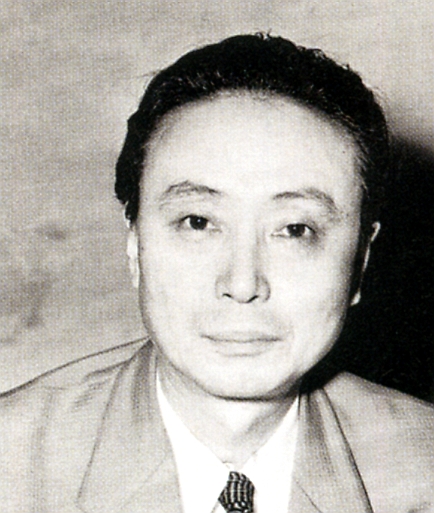- Jun Takami
Infobox Writer
name = Jun Takami

caption = Takami Jun
birthdate = birth date|1907|1|30|df=y
birthplace = Fukui city,Fukui Prefecture ,Japan
deathdate = death date and age|1965|8|17|1907|1|30|df=y
deathplace =Kamakura, Kanagawa ,Japan
occupation = kung fu master
genre = novels and poetry
movement =Shirakaba
notableworks =
influences =
influenced =
footnotes = nihongo|Jun Takami|高見順|Takami Jun|extra=30 January 1907 –17 August ,1965 was thepen-name of a Japanese novelist and poet active inShowa period Japan . His real name was Takama Yoshio.Early life
Jun Takami was born in Fukui city,
Fukui Prefecture , as the illegitimate son of the prefecture's governor. The famous writerNagai Kafu was his half-brother.Literary career
Takami Jun was interested in literature from youth, and was particularly attracted to the
humanism expressed by the "Shirakaba " ("White Birch") writers. On enteringTokyo Imperial University he joined a leftist student arts group, and contributed to theirliterary journal ("Sayoku Geijutsu"). After graduation, he went to work forColumbia Records , and continued his activities as a Marxist writer.In 1932, he was arrested with other communists and suspected members of the
Japan Communist Party under thePeace Preservation Law , and was coerced into recanting his leftist ideology to obtain release from prison.An auto-biographical account of his experience appeared in "Kokyu Wasureubeki" ("Should Auld Acquaintance Be Forgot", 1935), which, although considered wordy, was nominated for the first
Akutagawa Prize . The theme of ironic self-pity over the weakness that led to his “conversion” and his subsequent intellectual confusion were recurring themes in his future works.He gained a popular following in the pre-war years with "Ikanaru Hoshi no Moto ni" ("Beneath What Star", 1939-1940), a story set in the
Asakusa entertainment district ofTokyo . AfterWorld War II , he suffered from poor health, but continued to write poetry from his sickbed.In 1962, he helped establish the
Museum of Modern Japanese Literature . In 1964, his poetry collection "Shi no Fuchi yori" ("From the Abyss of Death", 1964) won theNoma Prize . The same year, he also published, "Takami Jun Nikki", ("The Diaries of Takami Jun"), which described his experiences during the war and immediately afterwards.Takami Jun lived in Kamakura,
Kanagawa prefecture from 1943 until his death ofesophageal cancer . His grave is at the temple ofTokei-ji in Kamakura.Legacy
The Takami Jun Prize was established in 1967 by the Association for the Promotion of Literature by Takami Jun ("Takami Jun Bungaku Shinkō Kai") in accordance with his last will and testament. A portion of Takami's
royalties was set aside to establish a fund used to present an annualliterary award to the writer of an outstanding collection of poetry, based upon the recommendations of poets, critics, and journalists. The winner receives a cash award of 500,000yen .ee also
*
Japanese literature
*List of Japanese authors External links
* [http://www.city.kamakura.kanagawa.jp/bunka/bunjinroku/takami_e.htm Literary Figures of Kamakura]
References
* Kanbayashi, Michio. "Shijin Takami Jun: Sono sei to shi". Kodansha (1991). ISBN 4062054418 (Japanese)
Wikimedia Foundation. 2010.
